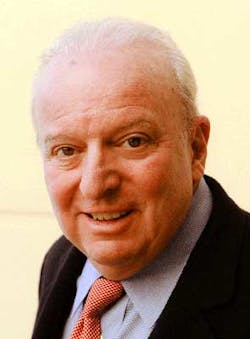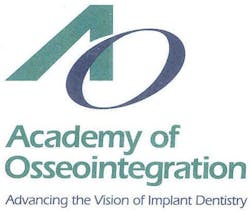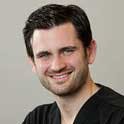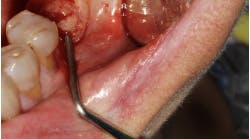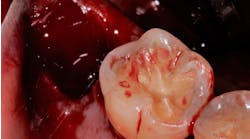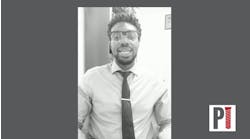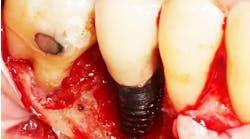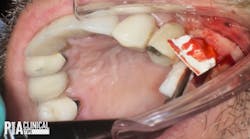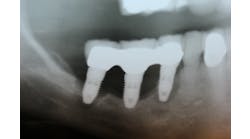Standards of care for implant dentistry: an interview with Dr. Joseph Gian-Grasso, president of the Academy of Osseointegration
I recently sat down with Dr. Joseph Gian-Grasso, a practicing periodontist from Philadelphia, and the current president of the Academy of Osseointegration. The AO recently published the results of a survey that showed the vast majority of dentists believe implant dentistry should be held to certain guidelines. I wanted to learn more about these guidelines: who sets the standards of care and how is it done?
A diplomate of the American Board of Periodontology, Dr. Joseph Gian-Grasso specializes in the areas of periodontics and dental implantology in a Philadelphia group practice. He served as clinical assistant professor of postgraduate periodontics at the University of Pennsylvania's School of Dental Medicine, clinical associate professor of periodontology at Temple University School of Dentistry, and director of the Implantology Center at the Medical College of Pennsylvania.
Dr. Gian-Grasso is chair of the Academy's Public Relations Task Force. He was elected to the AO Board in 2004 and previously served as treasurer, vice president, and president elect. He is a national spokesperson for the American Academy of Periodontology, where he served as a trustee for six years. He is past president of the Pennsylvania Society of Periodontists, Philadelphia Society of Periodontology, and the Delaware Valley Academy of Osseointegration.
His many prestigious dental and periodontology awards include the Abram Cohen Award, the American Academy of Periodontology Award, the Lactona Award, and the University of Pennsylvania University and Dental Alumni Awards of Merit. He has been chosen by his peers as one of America's Top Dentists by the Consumers' Research Council of America and is a Philadelphia Magazine "Top Dentist."
Dr. Gian-Grasso holds a BA from the University of Pennsylvania, a DMD from the University of Pennsylvania's School of Dental Medicine, and a Certificate of Advanced Graduate Study in Periodontics from the Boston University School of Graduate Dentistry.
Dr. Salierno: Tell me about the results of your membership survey.
Dr. Gian-Grasso: Today in 2014, 60% of implants are placed by specialists and 40% are placed by general dentists. Implant company projections indicate that by 2017 that trend will have completely reversed; 60% of implants will be placed by generalists and 40% will be placed by specialists. This is a significant trend toward nonsurgeons placing implants. We did a survey that showed 89% of our AO members felt that guidelines were needed. In 2010, Dr. Michael Norton led a task force to accomplish just that; results are available to anyone on our website at www.osseo.org.
Dr. Salierno: How else are your guidelines developed?
This follows our tradition of Consensus Conferences that began in 1998 when we helped the profession acknowledge the viability of the sinus augmentation. In 2007 our second Consensus Conference was on the State of the Science on Implant Dentistry, which focused on evidence-based dentistry and assessed the quality of available literature on subjects such as the effect diabetes, periodontal disease, smoking, etc., has on implant treatment outcomes. Our third summit in 2011 was called the Impact of Biological and Technological Advances on Implant Dentistry, and it looked at an exciting future where we can make use of modalities such as stem cells and nanotechnology.
Dr. Salierno: We now have 20- and 30-year follow-ups on our studies. The body of literature on implant dentistry has grown tremendously since the 1980s, and that certainly helps us develop the standards you’re discussing. At this point, do you believe we have things pretty well figured out, or do you feel there is much more research that needs to be done?
Dr. Gian-Grasso: My career has basically spanned that 30 years; I placed my first implant in 1983. What we expect of ourselves today is that the patient, restorative dentist, and surgeon are all satisfied with the outcome of the implant treatment. Our original definition of success was related only to implant survival. I think now our definition of true success is much more demanding, particularly in the esthetic zone. As our standards get higher, we need new research to support what we are expected to achieve.
Dr. Salierno: As the AO sets guidelines for these higher standards, can dentists expect to be held more accountable for their complications? For example, a mild food impaction around an implant crown may create an unhappy patient, but has that dentist performed beneath the standard of care?
Dr. Gian-Grasso: There’s really no confusion about that fact that dentists who perform surgical procedures are expected to perform at the level of a specialist. That’s very clear in the law. If you’re a specialist, you are expected to perform among the average of your peers. If you can’t perform at that level, then you are leaving yourself open to significant legal liability. The food impaction you mention is not an uncommon complication, but it’s also a minor one. We’re focusing on the more significant complications that could have been avoided, such as excess cement subgingivally and poor surgical techniques involving damage to vital structures.
Dr. Salierno: Do you think that a general dentist, or any dentist, who takes a weekend warrior course can perform implant surgery to these higher standards?
Dr. Gian-Grasso: I’ve mentored a great many dentists who were introducing implant dentistry into their practices and who are committed to ensuring they have the proper training and expertise. There are a lot of courses that are not a single weekend but involve the better part of a year. There is great supervision and care provided to patients. That’s what you need. A single implant in the posterior may seem like a simple beginning case since there is minimal esthetic demand, but you can still get into trouble pretty quickly. I can recall a specific individual who only used one implant system. He came to me to help treatment plan a very difficult case. I told him he couldn’t use his system because he needed shorter implants, and I named the systems that had the appropriate length implants. He didn’t know what he didn’t know. That’s the problem I see all too frequently. Both as generalists and specialists alike, we need to be forthright about our own level of experience and refer out what we don’t feel comfortable with. Even after 30 years, I refer patients who require a different or higher level of expertise than I have on a regular basis.
Dr. Salierno: When I speak with recent graduates, who’ve had varying degrees of exposure to implants in their training, I’m often asked what courses they should take to learn to get into implant surgery. What are the parameters they should be using to evaluate a potential course?
Dr. Gian-Grasso: I recommend a program that involves about 200 hours. There are some GPRs that are beginning to offer that level of training. You really have to master your head and neck anatomy, new radiographic technologies, and the digital technology that can enhance implant treatment outcomes. This creates a solid foundation for a lifetime of learning and continued education.
The AO really is becoming a nexus for specialists and generalists to come together to share best practices and coordinate the right care for our patients. Our members work to help other members sort through the plethora of emerging research to make sure we’re all up-to-date. We must all work together to represent our field in the best light possible.ADDITIONAL READING ...A periodontist's protocols to avoid dental implant complications: Part 1A periodontist's protocols to avoid dental implant complications: Part 2 -- establishing an implant maintenance protocol
